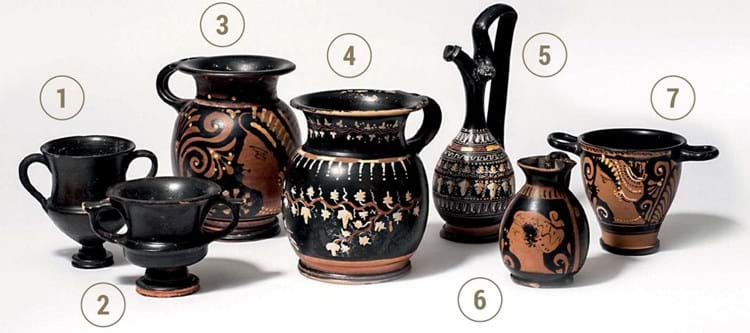
Antiquities can seem a prohibitive field for aspiring collectors, demanding both a lot of education and plenty of money.
In fact, this is not always the case, as Charles Ede’s exhibition next month proves.
The show, running at the Mayfair gallery from November 12-16, brings together a range of affordable antiquities, priced between £100-5000, including terracotta pitchers, gold jewellery, sculptural fragments and oil lamps.
Though the gallery has historically released an annual catalogue of such items, the exhibition is an open invitation for new and existing buyers to visit, see these pieces first hand and meet members of the team who are eager to advise and educate.
“In essence, anyone can buy these objects,” says Charis Tyndall, director at Charles Ede. “Antiquities can appeal on a purely aesthetic level and we provide information on every object we sell – everything has been fully catalogued.”
Whether considering an antiquity at Charles Ede or another reputable gallery, she recommends that provenance and condition are the two key points to confirm before buying.
Provenance is a widely publicised issue around buying antiquities, which concerns the previous ownership of each object and is a legal consideration. Charles Ede only offers objects on which full due diligence has been done, and details the provenance of each object in its catalogue. Sticking to galleries that are members of trade associations is a good start – Charles Ede, for example, is a member of International Association of Dealers in Ancient Art (IADAA), the Antiquity Dealers Association (ADA) and the British Antique Dealers Association (BADA).
Restoration question
Condition is often a more personal decision. Since these objects are often hundreds or even thousands of years old, most will have had some form of restoration.
“That’s fine in terms of the object’s desirability, but it is good to know what sort of shape it’s in before deciding how it will be used,” Tyndall says. When buying jewellery such as earrings, for example, those with hooks made of ancient gold are likely to be weaker than those made with their modern equivalent.
And a fragile ceramic, meanwhile, is not ideal for a home where children or pets are likely to knock it over.
It is also worth considering objects offered as fragments, such as the Greek terracotta face offered in this show.

“Sometimes a fragment can be even more alluring than a ‘whole’ object,” Tyndall says. “You’re focusing down on one element of an object without getting distracted by the whole shape or form. Your mind can build up the rest of it and it can be quite haunting.”
Home appeal
An academic side to collecting antiquities certainly exists. These are objects that come from the richest period of ancient history, from Egyptian, Roman, Greek and Near Eastern cultures.
However, their shapes and designs can also make them appealing to the modern home, as Charles Ede managing director Martin Clist points out. “When you consider that pieces can be had for as little as £100, it opens up a whole new world to potential collectors of the decorative and historic.
“Whether you have a deep interest in antiquity or are simply intrigued, our doors will be open.”














